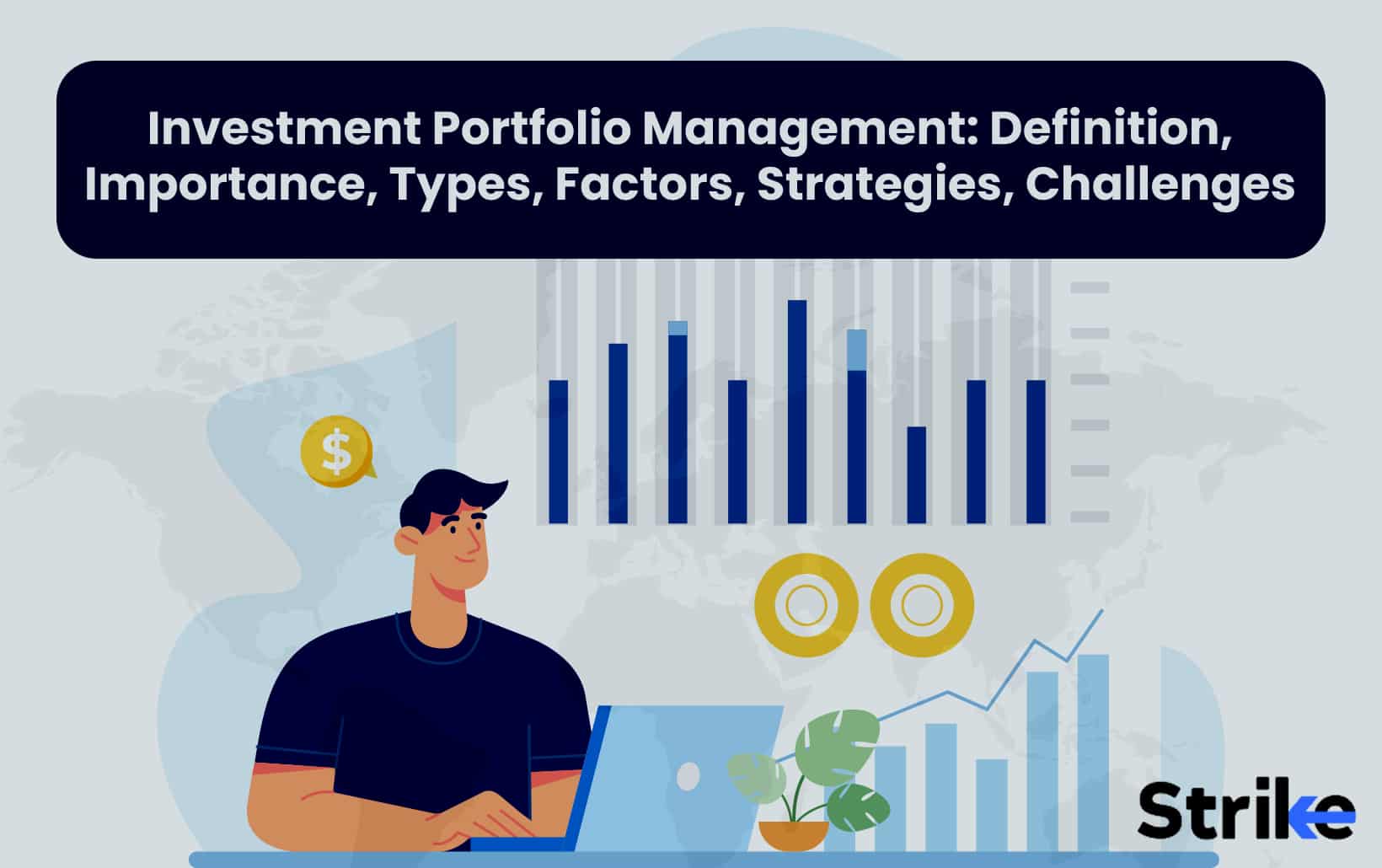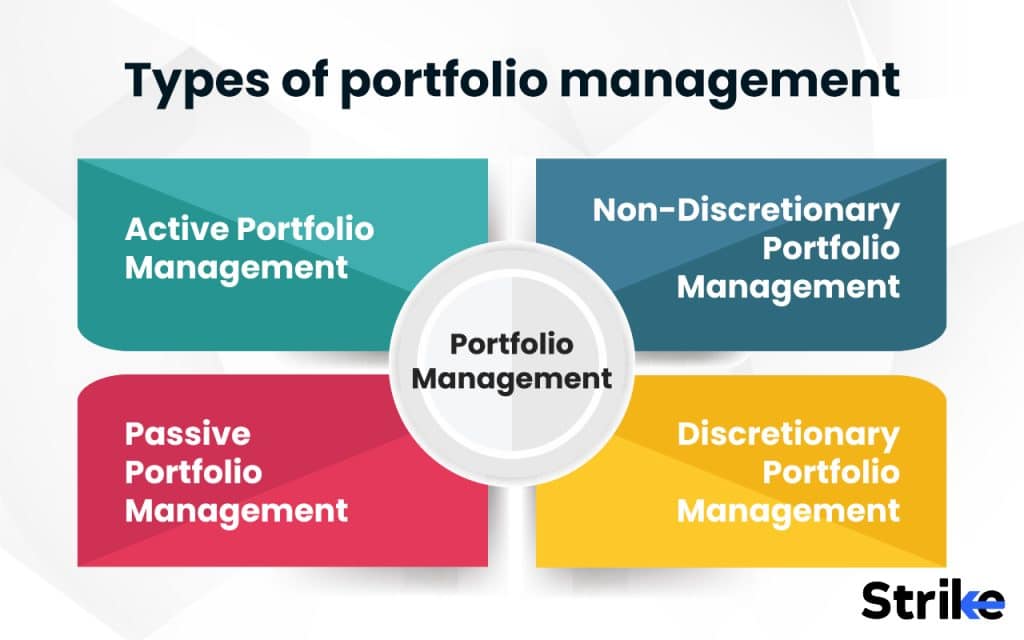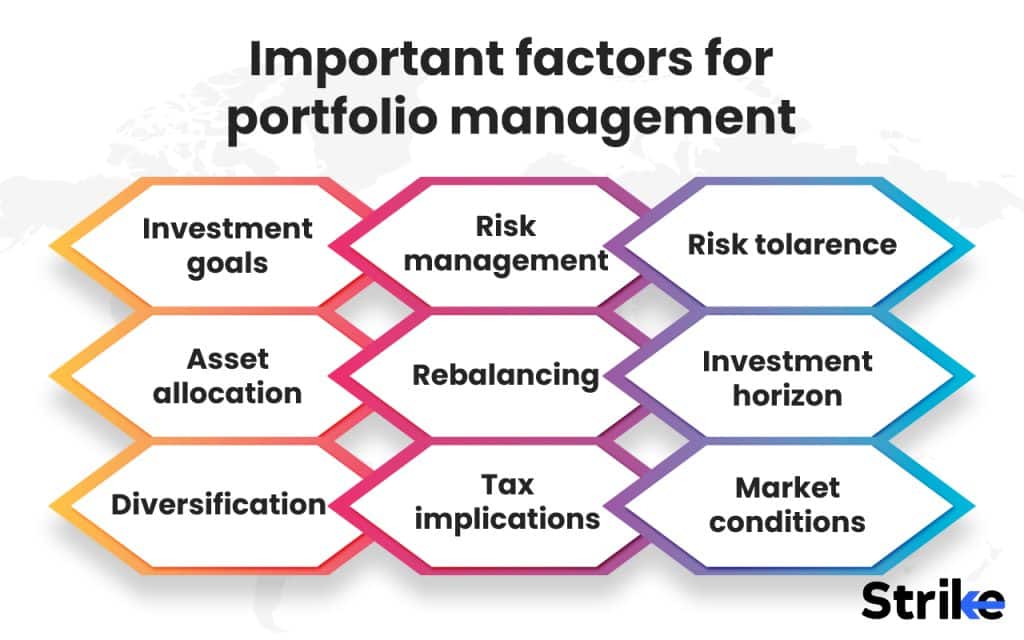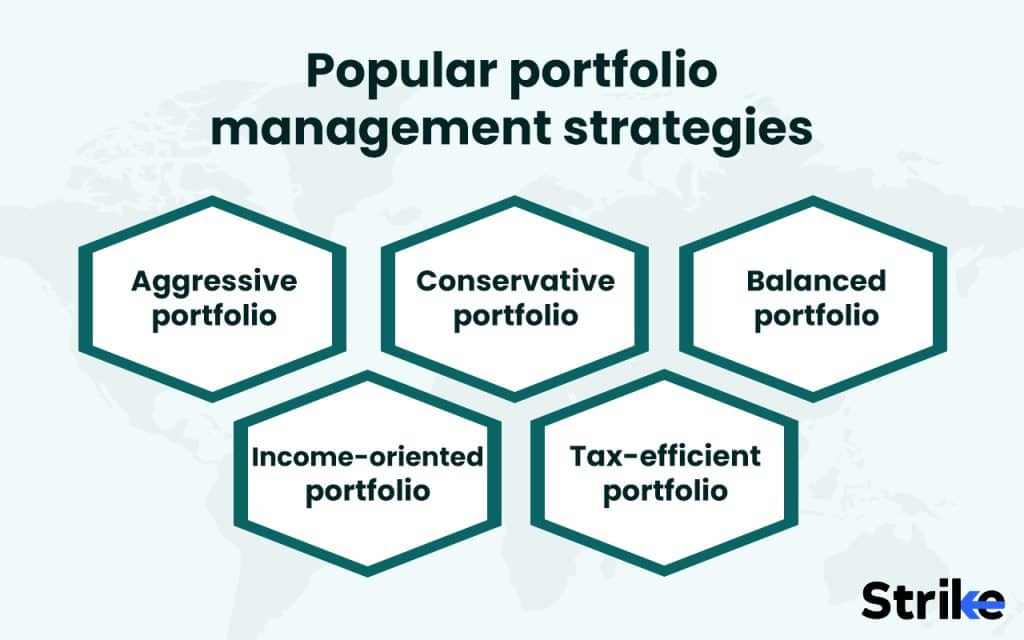
Investment portfolio management is the process of overseeing and allocating assets to various investment options to meet specified goals for the portfolio owner or investors. Investment portfolio management involves making decisions about how much to invest in each type of asset class based on objectives, risk tolerance, and investment time horizon.
Investment portfolio management also refers to the practice of constructing a diversified mix of securities and assets to meet an individual or institutional investment goal while balancing risk and return. The primary goal of investment portfolio management is to use different investment strategies and fund allocations in trading to maximize returns in a well-diversified portfolio for any level of risk.
One advantage of sound investment portfolio management is achieving optimal risk-adjusted returns through diversification. However, maintaining a well-diversified portfolio also requires ongoing monitoring and rebalancing which can be time-consuming.
Common types of investment portfolio include stocks, bonds, mutual funds, exchange-traded funds, hedge funds, commodities, currencies, real estate, derivatives, and other alternative investments. An effective investment portfolio will include a mix of these assets tailored to the specific needs, goals, and risk tolerance of each investor.
What is portfolio management?
Portfolio Management is the process of constructing and maintaining a collection of investments to meet specified goals. Portfolio management applies modern portfolio theory principles to find the optimal risk-return tradeoff for each investor. For investors, the objective is to maximise returns while minimising risk through diversification across various asset classes such as stocks, bonds, and real estate. Portfolio managers employ strategies like asset allocation, indexing, and active selection of securities to build portfolios tailored to an investor’s objectives and risk appetite.
Regular rebalancing of the holdings is crucial to maintain the intended asset allocation as market values fluctuate over time. Portfolio management applies modern portfolio theory principles to find the optimal risk-return tradeoff for each investor. Technology enables portfolio managers to obtain real-time data, swiftly analyse market information, and implement changes to portfolios. Effective portfolio management requires blending quantitative analysis with qualitative judgement to construct robust portfolios resilient to market turbulence.
Why is it important to manage a portfolio?
It is important to manage a portfolio as it enables investors to maximise returns while controlling risk exposure. Portfolio management provides a structured process to construct a diversified basket of investments aligned with the investor’s financial goals. Regular monitoring and rebalancing keeps the portfolio allocation in line despite fluctuations in asset prices over time.
Portfolio managers take advantage of opportunities in different market segments and hedge risks through prudent diversification. Leveraging portfolio optimization models and risk analytics helps create robust portfolios resilient to market turbulence. Portfolio management applies discipline to investing by linking investments directly to an individual’s objectives, time horizon and risk tolerance. Ongoing portfolio management is essential for investors to meet their long-term financial targets in the face of dynamic market conditions.
What are the types of portfolio management?
There are 4 main types of Portfolio Management. Active management involves a manager actively buying and selling assets to try to outperform benchmarks. Passive management tracks a market index with minimal trading. Discretionary management involves the manager having authority to make investment decisions on behalf of clients. Non-discretionary management involves the manager making recommendations but the client retains decision authority.
1. Active Portfolio Management
Active portfolio management refers to a strategy where the manager aims to beat the market through security analysis and active trading. Unlike passive management that tracks a market index, active managers seek mispriced securities to exploit inefficiencies. By researching companies and industries, active managers construct concentrated portfolios diverging from the benchmark to generate alpha. Outperformance is measured by comparing returns and holdings to a market index like the S&P 500 over time periods.
2. Passive Portfolio Management
Passive Portfolio Management refers to a strategy that tracks a market index like the S&P 500 rather than trying to outperform. The manager builds a portfolio matching the components and weightings of the benchmark index. By mimicking the index, passive management aims to generate returns equivalent to the market not exceed it. Index funds and exchange-traded funds are common vehicles used in passive management to efficiently replicate indices.
3. Discretionary Portfolio Management
Discretionary Portfolio Management refers to when an investment manager makes all the investment decisions on behalf of the client. The client gives the manager authority to buy, sell, and select securities at their discretion to meet the account objectives. Unlike non-discretionary management, the client does not approve each trade but instead grants full autonomy to the manager. Discretionary management is common for institutional investors and high net worth individuals seeking specialised expertise in constructing portfolios.
4. Non-Discretionary Portfolio Management

Non-Discretionary Portfolio Management refers to when the client retains control over investment decisions instead of the manager. The manager provides recommendations on trades and asset allocation, but requires approval from the client before executing any transactions. This allows the client to maintain oversight and veto power for all buy and sell orders in the account. Non-discretionary management is common among individual investors who want advisory services while retaining ultimate authority over portfolio decisions.
Each approach has pros and cons for generating returns while balancing risks and costs. The appropriate strategy depends on investor goals, preferences and constraints.
What are the important factors for portfolio management?
The important factors for portfolio management include investment goals, asset allocation, diversification, risk management, rebalancing, taxes, risk tolerance, time horizon, and market conditions.

Investment Goals
The first and most important factor is understanding the client’s investment goals. What is the purpose of this portfolio? Common investment goals include saving for retirement, funding education, generating income, etc.
Asset Allocation
Asset allocation refers to dividing an investment portfolio among different asset classes, such as stocks, bonds, real estate, commodities, and cash equivalents. Determining the appropriate asset allocation is a critical component of portfolio management, as it largely determines the expected risk and return.
Diversification
Diversification means spreading investments across and within asset classes to reduce overall portfolio risk. By holding a variety of assets that perform differently under various market conditions, diversification aims to smooth out the impact of market volatility. The portfolio manager seeks to select investments that are not closely correlated, such that declines in one investment are offset by stability or gains in another.
Risk Management
Managing portfolio risk is vital. The portfolio manager analyses the client’s risk tolerance level and designs an asset allocation aligned with that risk profile. Key risk metrics to evaluate include standard deviation, beta, Sharpe ratio, drawdown, and VaR. Stress testing under various adverse scenarios helps gauge potential downside.
Rebalancing
As markets move over time, the portfolio asset allocation drifts away from its target. Rebalancing involves buying and selling assets to bring the portfolio back in line with the desired asset mix and risk profile. Rebalancing provides discipline for selling high and buying low. It forces the manager to lock-in gains from appreciated assets and allocate capital to undervalued assets.
Tax Implications
Taxes significantly impact net investment returns. The portfolio manager should understand how different assets are taxed based on income, capital gains, and the investor’s tax bracket. Tax-deferred or tax-exempt securities are advantageous for taxable accounts. Generating long-term capital gains is preferred over short-term gains or ordinary income.
Risk Tolerance
The investor’s risk tolerance, or their ability and willingness to bear investment losses, should guide how the portfolio is constructed in terms of asset mix and risk levels. Conservative investors have lower risk tolerance, while aggressive investors accept higher volatility to pursue higher returns.
Investment Horizon
The investor’s investment time horizon – short term, medium term, or long term – is a key consideration. Portfolios geared for near-term goals like a house down payment will focus on capital preservation and liquidity. Long-term portfolios for goals like retirement affords more volatility and illiquidity to maximise returns.
Market Conditions
Prevailing conditions in the overall markets influence portfolio strategy. During periods of high valuation and optimism, portfolio managers hold higher cash balances, trim positions, and hedge downside risk. In bearish markets with falling asset prices, the manager capitalises on opportunities by allocating more capital to undervalued investments. Managers analyse leading economic indicators, business cycles, and sectors to assess where the broader market is headed. .
The portfolio manager’s decisions aim to optimise the risk-return tradeoff and achieve the investor’s objectives. Carefully incorporating these key factors allows constructing a tailored portfolio positioned for long-term success.
What are the popular portfolio management strategies?
The popular portfolio management strategies are aggressive, conservative, balanced, income-oriented, and tax-efficient portfolios. They are given below.

Aggressive Portfolio
An aggressive portfolio takes on substantial risk in pursuit of maximum returns. It heavily emphasises growth-oriented equities to drive higher potential capital appreciation over the long run. An aggressive portfolio generally holds 80-100% in stocks and little to no bonds or cash. The stock allocation focuses on segments with higher volatility like small-caps, specific sectors, or emerging markets.
Conservative Portfolio
A conservative portfolio focuses on capital preservation and stability over returns. It holds primarily low-risk fixed income assets like high-quality bonds, cash equivalents, and money market funds. The equity allocation is minimal, between 0-20% in dividend-paying large-cap stocks and low-beta sectors like consumer staples and utilities.
Balanced Portfolio
As the name suggests, a balanced portfolio takes a middle-of-the-road approach between aggressive growth and conservative stability. It aims to provide reasonable returns with a medium level of risk.
Income-Oriented Portfolio
Income-oriented portfolios focus on generating regular income for investors who rely on portfolio withdrawals to meet living expenses. They emphasise fixed income assets with consistent interest or dividend payouts like bonds, REITs, MLPs, preferred stocks, and high-yield stocks. Riskier growth investments take a smaller share.
Tax-Efficient Portfolio
Tax-efficient portfolios aim to optimise after-tax returns by minimising unnecessary taxes paid. Interest, dividends, and realised capital gains are subject to taxes, reducing investor net returns. Key tax-efficient strategies include using tax-advantaged accounts, holding assets for longer durations, harvesting losses to offset gains, investing in assets with favourable tax treatment like municipal bonds, and avoiding excessive trading.
Portfolio management strategies differ based on investor goals. Aligning the portfolio strategy with the investor’s objectives and constraints is key for investment success. With various approaches available, investors have flexibility to find a strategy tailored to their needs.
What are the challenges of portfolio management?
The challenges of portfolio management are multifaceted, requiring managers to balance many complex and interrelated factors. Market volatility introduces risks that must be weighed against expected returns when constructing portfolios. Determining optimal asset allocation across diverse securities and classes is critical yet challenging, significantly impacting results. Portfolio managers must watch macroeconomic trends and regulatory shifts which continuously reshape investment landscapes globally.
Rapid technological advancements also pose a key challenge, with automated trading systems lacking human oversight and perspective. Additionally, growing appetite for ESG considerations adds intricacies to evaluating opportunities. Managing these dynamics amidst pressure to maximize returns, while appropriately gauging ever-evolving risks, encapsulates the essence of dilemmas portfolio managers routinely face. Ultimately, their skill lies in effectively mitigating these challenges to make sound investment decisions aligned with client goals.
Who needs portfolio management?
Portfolio management is crucial for investors lacking extensive expertise across diverse securities and markets. By enlisting professional portfolio management, novice investors benefit from experienced guidance navigating intricate investment universes. Portfolio management helps construct optimised portfolios accounting for risk preferences and return objectives.
For busy professionals consumed with full-time careers, portfolio management efficiently stewards investment processes they scarcely comprehend or lack bandwidth to direct themselves. Ultimately, anyone seeking simplified access to sophisticated strategies, seeking to capitalize on market opportunities beyond their grasp, or aiming to meet financial goals through customized portfolios gain tremendous advantage through professional portfolio management services.
What are the top portfolio management firms?
Leading portfolio management firms include Motilal Oswal, 360 One, ASK, White Oak, Invesco, ValueQuest, ICICI, Alchemy, Banyan Tree, and Kotak. These respected organisations offer customised portfolio strategies to suit unique investor goals and risk profiles. With robust research capabilities and extensive market insights, top firms engineer optimised portfolios across asset classes while actively managing risks. They leverage state-of-the-art technology to efficiently execute trading and reporting. Continuous oversight by experienced investment professionals maximises portfolio performance aligned to client interests. For those seeking hands-on expertise directing their investments, partnering with established, trusted portfolio management firms provide tremendous advantage in today’s complex markets.
Who are the top portfolio managers?
Renowned portfolio managers include Shreyash Devalkar of Axis Mutual Fund, Aniruddha Naha of PGIM India, R. Srinivasan of SBI Mutual Fund, Sankaran Naren of ICICI Prudential, Jinesh Gopani handling equities at Axis, Sohini Andani of SBI, Manish Gunawan of Nippon India, Harsha Upadhyaya of Kotak Mahindra, Chandraprakash Padiyar of Tata, and Ankit Agarwal of UTI. These skilled investors direct billions in assets across diversified portfolios, leveraging decades of expertise. Their deep understanding of markets and ability to actively adapt to evolving conditions makes them stand out as some of the top portfolio manager talent in the industry. With strong long-term performance across funds, these professionals have built tremendous trust steering client investments through various cycles and uncertainties.









![85 Common Stock Market Terminologies for Dummies [Updated List for 2026] 40 85 Common Stock Market Terminologies for Dummies [Updated List for 2025]](https://www.strike.money/wp-content/uploads/2025/04/Popular-Stock-Market-Terms-for-Beginners-Banner.png)










No Comments Yet.